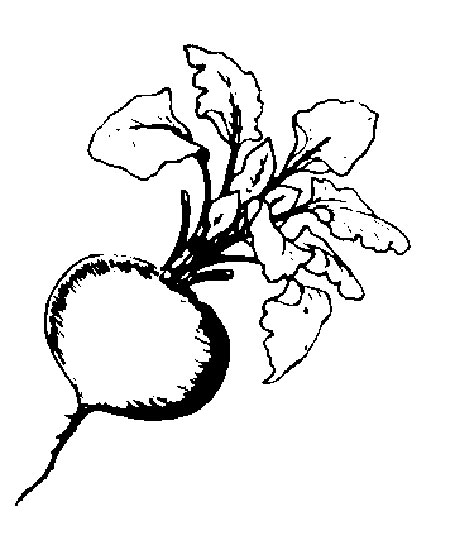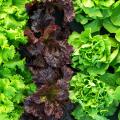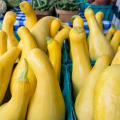Beets
Beets

Beets require cool temperatures and a loose, moist soil for best production. An adequate supply of potash in the soil is necessary for roots to form. Test soil before planting. Beets do not tolerate acid soils. Beets are shallow-rooted, so never let the soil dry completely. Because beets require cool temperatures, you can grow them in spring and fall.
Most beet seeds produce a small cluster of seedlings when they germinate. Even with individually placed seeds, thinning is necessary for correct plant spacing. Thin seedlings to stand 2 inches apart. Beet seeds are slow to germinate, so mix in some radish seeds to mark the row. Poor stands of seedlings can often be traced to planting too deep or crusting soils after rain or irrigation.
Black spots in beets may indicate a shortage of boron in sandy soil. Dissolve 1 level tablespoon of household borax in 3 gallons of water and apply it to 100 feet of garden row as a corrective measure. Reduce the amount of borax for shorter rows because too much boron can be toxic to plants.
Do not discard beet leaves; they are an excellent leafy green. You can also use the thinnings of young beets as greens. Beets require 60 to 70 days from planting to harvest. Harvested beets can be stored in the refrigerator in a plastic bag for several weeks. A variety with golden roots is available.
Varieties
- Burpee’s Red Ball—uniform; smooth-skinned; globe-shaped; 3-inch dark red roots; tops erect; medium tall; red and green.
- Cylindra—long, cylindrical root that gives uniform slices; dark red; 6 inches long; leaves excellent as greens.
- Detroit Dark Red—an old standard variety; globe shaped; smooth; uniform; deep red color.
- Golden Beet—yellow interior; orange skin.
- Ruby Queen—uniform; smooth; round with fine taproot; superior quality; fine for canning; small crown; AAS 1957.
Publications
News
Vegetable producers across the Southeast are invited to the 2025 Vegetable Field Day on July 23 at the Mississippi State University station in Verona, Mississippi.
If you grow your own vegetables, you will likely see at least a few pesky insects that want to feed on your plants. Slugs are one of the pests you may be noticing now.
Did you know yellow squash is in the pumpkin family and are 95 percent water?



